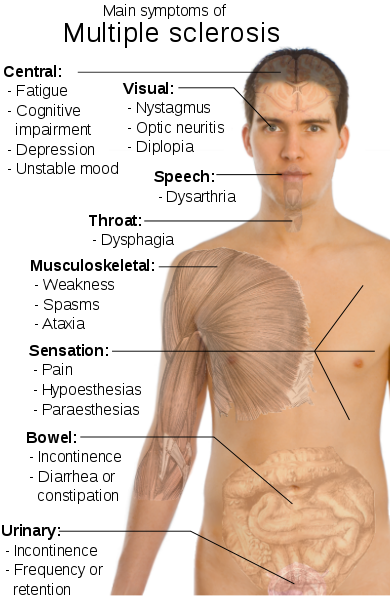
Baclofen is a medication commonly used to decrease spasticity related to multiple sclerosis, spinal cord injuries, or other neurological diseases. Spasticity is a muscle problem characterized by tight or stiff muscles that may interfere with voluntary muscle movements.
Normally muscles receive electrical signals via nerves to contract and relax. Spasticity is caused by an imbalance of electrical signals coming from the spinal cord through the nerves to the muscle. This imbalance causes the muscle to become hyperactive, resulting in involuntary spasms. Baclofen works by restoring the normal balance and reducing muscle hyperactivity. In this way, it allows for more normal muscle movements.
What Are the Side Effects of Baclofen Therapy?
Side effects may include:
- dizziness
- Drowsiness
- Headaches
- Nausea
- Weakness
Baclofen can be taken orally as a pill or delivered directly into an area of the spine called the intrathecal space. The intrathecal space contains the cerebrospinal fluid -- the fluid surrounding the spinal cord and nerve roots. Often MS patients receive intrathecal Baclofen because oral Baclofen causes unpleasant side effects, such as confusion, weakness, and sleepiness. But intrathecal Baclofen delivers the drug right to the target site in the spinal cord. Since the medication does not circulate throughout the body, only tiny doses are required to be effective. Therefore, side effects are minimal.

What Is the Intrathecal Baclofen Pump System?
The intrathecal Baclofen pump system is the way doctors give the drug directly into the spinal fluid. The system consists of a catheter (a small, flexible tube) and a pump. The pump -- a round metal disc, about one inch thick and three inches in diameter -- is surgically placed under the skin of the abdomen near the waistline.
The pump stores and releases prescribed amounts of medicine through the catheter. The pump is refilled by inserting a needle through the skin into a filling port in the center of the pump. With a programmable pump, a tiny motor moves the medication from the pump reservoir through the catheter. Using an external programmer, your treatment team can make adjustments in the dose, rate, and timing of the medication.
People with the pump must return to their doctor's office for pump refills and medication adjustments, typically every 2-3 months. The pump is taken out and replaced at the end of the battery's life span (which is usually 5 to 7 years).
Who Is a Candidate for the Intrathecal Baclofen Pump?
Anyone who has spasticity that is not responsive to oral treatment is a candidate.
If you are considering intrathecal Baclofen therapy, you will generally meet with a treatment team that may include a doctor specialized in rehabilitation (physiatrist), a physical therapist , an occupational therapist , a nurse, and a social worker. All of these professionals work as a team to provide a comprehensive evaluation of your spasticity symptoms and to establish a treatment plan adapted to your personal needs.
What Are the Advantages of the Baclofen Pump System?
The Baclofen pump system:
- Efficiently reduces spasticity and involuntary spasms, promoting a more active lifestyle, better sleep, and reduced need for oral medications.
- Continuously delivers Baclofen in small doses directly to the spinal fluid, increasing the therapeutic benefits and causing fewer and less severe side effects than the oral medication.
- Can be individually adjusted to allow infusion rates that vary over a 24-hour period.
- Can be turned off when it isn't needed.
- Reduces or eliminates pain and discomfort from spasms and spasticity.
What Are the Disadvantages of the Baclofen Pump System?
There are certain risks that must be considered with any surgery. Risks include:
- An adverse reaction to anesthesia
- Infection
- Bleeding
- Bladder control can be altered, causing loss of urine unexpectedly
- Pump malfunction: If the pump malfunctions, it may deliver too much medicine at once. In that instance, you will develop symptoms such as drowsiness, dizziness, weakness, insomnia (difficulty falling and/or staying asleep), lightheadedness, nausea, constipation, vomiting, loose muscles, trouble with vision, coma, respiratory depression, seizures, dry mouth, double vision, decreased concentration, diarrhea, or delayed responsiveness. Should this occur, go to the nearest Emergency Department immediately. A doctor can give you a drug called Physostigmine to counteract Baclofen.
- Kinked catheter: If the catheter becomes "kinked," surgery may be necessary to replace the catheter.
How Will My Doctor Know If the Baclofen Pump System Is Right for Me?
If your treatment team recommends the Baclofen pump system after your evaluation, you will have a trial of the therapy to test the potential effectiveness of the medication.
During the medication trial, Baclofen is injected into the spinal canal (using a small needle) and the treatment team assesses its effectiveness over 2-4 hours. If your muscles don't relax during the first trial, a larger dose may be given on a later date to determine its effectiveness.
If you experience positive results with the intrathecal medication you can decide with your doctor and family members if you should have a Baclofen pump system implanted during a surgical procedure.
What Happens After the Procedure?
After the implantation procedure, you will stay in the hospital a few days so your recovery can be closely monitored. While you are in the hospital, the dose of Baclofen will be adjusted.
Reviewed by the doctors at the Mellen Center for Multiple Sclerosis Research at The Cleveland Clinic.
Edited by Charlotte E. Grayson, MD, WebMD, May 2004.
Portions of this page © The Cleveland Clinic 2000-2004
|
Bookmark this post:
|
|

1 Comment
Is it possible to treat this disease with Baclofen medication?
Posted on November 25, 2010 at 4:49 AM
Post a Comment